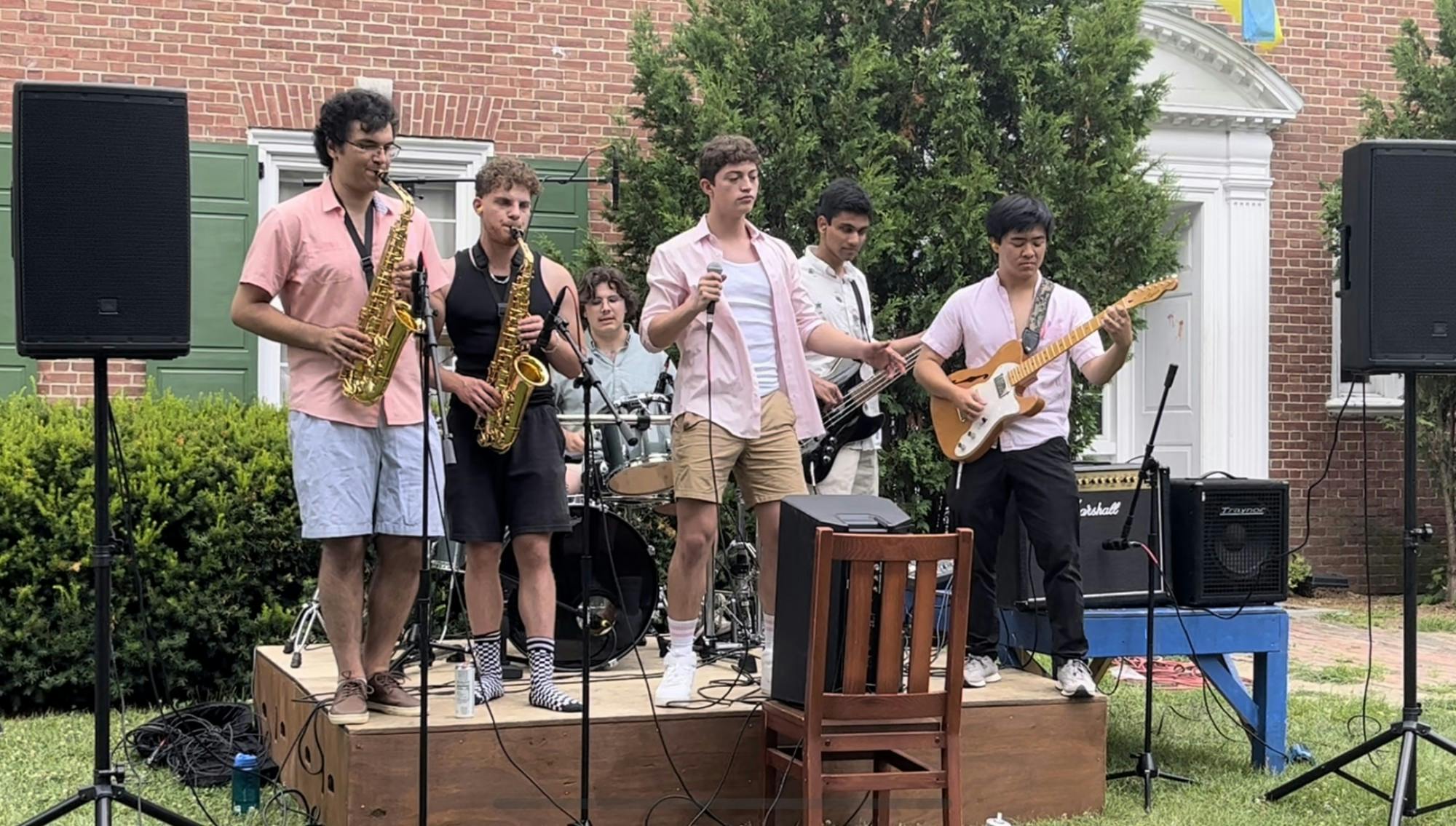When a fraternity announces that a student band is playing, you’ll typically see a rush of people attempting to get into the venue. Inside, you’ll find a sea of students crammed together as an audience, with fellow students shredding, singing and grooving along to their own live music. With such an entertaining product, most students overlook the two essential questions: How does this whole scene work and what goes into each performance? As someone who has played in all four campus bands this summer — Exit 13, Gibberish, Tightrope and The Stripers — I’m well equipped to answer.
To start, there is no central database of bands or fraternities to go to for booking. In my experience, if a fraternity wants a band to perform at an event, they usually ask through a personal connection. Similarly, if a band wants to perform at a particular fraternity, they will use their personal connections. There are pros and cons to this system; the informal nature of these interactions makes it easier to find bands and easier to request venues, but it also makes it harder when it comes to haggling payment and scheduling.
Before a band even begins to rehearse, they have to choose a setlist. A band has to balance several factors when choosing which songs to play, such as the popularity of the songs, the difficulty of the repertoire and what genre they want to be known for. These considerations are important for determining the reputation of the band, which affects future performances, so bands take extra care in choosing songs that will appeal to all audiences while also giving them a unique sound. When I perform with a band like The Stripers, which has two skilled guitarists doubling as lead singers, we choose songs that highlight their talents. On the other hand, a band like Tightrope, which has a skilled horn section, will need a repertoire that showcases their skills.
Rehearsal is an obvious part of the creative process, but it still bears mentioning. Even if individual musicians are experienced, it takes constant practice in order to maintain the cohesion that separates the good bands from the great ones. Most bands rehearse in the Hop for two to four hours a week, and that does not include the time that individual musicians rehearse beforehand. These rehearsals are focused, but we know how to have fun as well. Some of my best memories from this summer have come during breaks in these practices, where we talk about our weeks or just spontaneously start jamming.
When audience members arrive at a performance, the amps are already set up and the sound is clear and balanced. However, with the rare exception of Dartmouth-sponsored performances, there are no stage hands to help with equipment and a soundcheck; we have to do it ourselves. This summer, I’ve done setups with limited equipment that take “only” about an hour and a half. Yet, my performance with The Stripers on July 29 required the setup of a full PA system with microphones on every instrument, a gargantuan process that took nearly four hours!
The venue also determines the necessity and cost of rentals. As most bands do not have the luxury of having their own PA system and performance-quality amplification, they are often dependent on the sound system and equipment of a fraternity like Bones Gate or Zeta Psi. Other fraternities do not have performance equipment, and therefore students must rent from Hanover Strings, which requires extra preparation time and costs.
Even with all the preparation time, the performances can still throw curveballs. When I performed with The Stripers on July 29, our lead singer forgot how to sing the third verse of a song. We had obviously never practiced this scenario, but we listened to each other and made quick changes, improvising an entirely new section of the song as our lead singer ad-libbed a speech to the crowd. I can’t say I’m entirely sure what he said, but the crowd sure loved it.
Overall, for each one hour performance, a band can expect to spend upwards of six hours on practicing, setup and troubleshooting. None of us are professional musicians, and we all have to balance our schoolwork and other extracurriculars on top of our performances. However, it’s all worth it when you see the crowd of your fellow students, some of whom you know and some of whom you’ve never seen, cheering wildly at the product you’ve just put out. It’s a feeling that sticks with you long after the concert is over.




